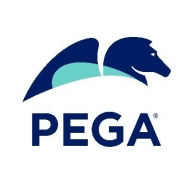

Pega Platform and OpenText Operations Orchestration are leading contenders in the automation solutions space. Pega Platform stands out for its ease of use and competitive pricing, while OpenText Operations Orchestration is known for its rich feature set, making it a worthwhile investment.
Features: Pega Platform offers robust process automation, AI-driven insights, and comprehensive reporting tools. OpenText Operations Orchestration shines with extensive integration capabilities, scalability, and strong workflow management.
Room for Improvement: Pega Platform could enhance its integration capabilities and scalability. Improvements in customization and feature depth would benefit OpenText Operations Orchestration, as would simplifying certain workflow processes and deployment.
Ease of Deployment and Customer Service: Pega Platform provides a straightforward deployment process with responsive customer support. OpenText Operations Orchestration, despite its complex deployment, offers exceptional support and extensive documentation.
Pricing and ROI: Pega Platform offers competitive pricing with a quicker ROI due to reduced initial costs. OpenText has higher initial costs but promises significant long-term benefits through extensive feature utilization, justifying its pricing strategy.
The technical support from Pega is very low, rating a one or two out of ten.
I never needed support from the platform standpoint, but if additional features are required, we have regular meetings with the product team for feedback.
Pega's technical support team is very helpful.
Currently, big banking providers and insurance providers, even the members for healthcare payers, are using more than millions of operations on a daily or weekly basis.
With the recent development of AI agents in Pega Platform 24.2, the adoption is not heavy due to regulations around using external LLM by customers, especially regulated customers in BFSS and healthcare.
Pega introduced Constellation, which allows a user to build a more engaging visual experience.
My learning curve in robotics has been challenging.
Pega is priced higher than open-source options like Flowable but is suitable for large-scale industries like banking and insurance.
The pricing is expensive, and this is an issue.
From a licensing perspective, it is higher than the competition.
Management capabilities such as dashboards.
Pega Platform is excellent for enterprise-level solutions with integrations to entire systems, including case management, service orchestration, CRM, decision-making capabilities, digital process automation, and AI-driven functionalities.
| Product | Market Share (%) |
|---|---|
| Pega Platform | 6.3% |
| OpenText Operations Orchestration | 0.7% |
| Other | 93.0% |


| Company Size | Count |
|---|---|
| Small Business | 4 |
| Midsize Enterprise | 2 |
| Large Enterprise | 20 |
| Company Size | Count |
|---|---|
| Small Business | 9 |
| Midsize Enterprise | 15 |
| Large Enterprise | 68 |
OpenText Operations Orchestration (OO) automates, integrates, and orchestrates any IT process, on cloud or off. Automate using low-code/no-code workflow authoring options. Integrate with an API rich, extensible platform. Centrally orchestrate powerful, scalable workflows.
With OO you can automate and orchestrate infrastructure automation and IT processes from service fulfillment to incident remediation, cloud service delivery, and disaster recovery.
Operations Orchestration offers the tools needed to provide enterprise wide orchestration capabilities:
Operations Orchestration offers the following components:
Pega Platform facilitates business process management, case management, and workflow automation for industries like banking, insurance, and healthcare. It supports digital transformation and customer service enhancements with its low-code capabilities and seamless integrations.
Pega Platform enables users to create efficient systems for case management, financial operations, and digital transformations. It provides tools for client onboarding, quoting, claims processing, customer experience improvements, and content management. Pega's low-code approach allows for the automation of complex processes, making it suitable for enterprises looking for adaptability and rapid deployment. While it offers strong real-time analytics and decision automation, users acknowledge challenges in user interface, integration, and performance aspects. High costs and a learning curve need attention, and enhancements in AI features and cloud services are desired.
What are the key features of Pega Platform?In banking, Pega Platform automates loan processing, accelerates customer onboarding, and manages compliance. Insurance companies benefit from streamlined claims processing and policy management. Healthcare sectors use the platform for patient engagement and care coordination, enabling organizations to adapt quickly to changing industry requirements.
We monitor all Process Automation reviews to prevent fraudulent reviews and keep review quality high. We do not post reviews by company employees or direct competitors. We validate each review for authenticity via cross-reference with LinkedIn, and personal follow-up with the reviewer when necessary.